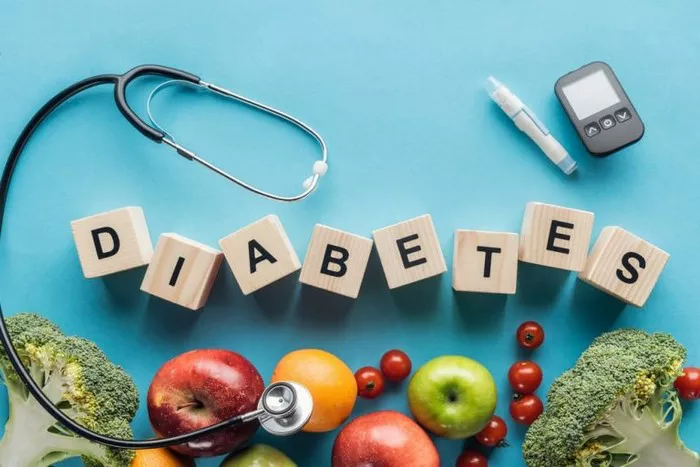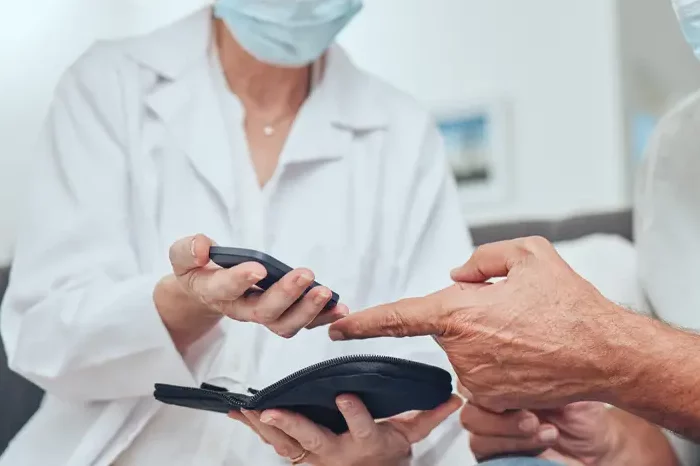Diabetes management is a complex journey that involves various lifestyle changes, but understanding how food influences blood sugar is crucial in managing this condition effectively. While long-term dietary strategies focus on stabilizing blood sugar levels, there are specific foods that can provide quick relief in lowering elevated blood glucose. This article explores these foods, highlighting their benefits, mechanisms, and practical uses in diabetic management.
Introduction: The Importance of Rapid Blood Sugar Control
For individuals living with diabetes, maintaining blood sugar levels within a target range is essential for preventing complications. Hyperglycemia, or elevated blood sugar, can lead to both short-term and long-term health issues if not addressed. Immediate intervention is often necessary to avoid acute complications such as ketoacidosis or hyperosmolar hyperglycemic state (HHS).
While insulin injections or oral medications are primary tools for blood sugar regulation, diet can also play a significant role in managing blood glucose levels, particularly for those with Type 2 diabetes or prediabetes. Some foods, when consumed at the right time and in appropriate quantities, can provide rapid assistance in lowering blood sugar.
How Foods Affect Blood Sugar: A Brief Overview
Before diving into specific foods, it is important to understand how food interacts with blood sugar. After eating, carbohydrates in food are broken down into glucose, which enters the bloodstream. This triggers the release of insulin from the pancreas, allowing glucose to enter cells for energy. However, for individuals with diabetes, the body either does not produce enough insulin (Type 1 diabetes) or cannot effectively use the insulin it produces (Type 2 diabetes), leading to elevated blood glucose levels.
Some foods have a low glycemic index (GI), meaning they have a slower, more gradual impact on blood sugar. Others have a high GI and can cause a rapid increase in glucose levels. In the case of acute hyperglycemia, certain foods can have a quick and significant impact on lowering blood glucose by either improving insulin sensitivity, delaying sugar absorption, or influencing other metabolic pathways.
Top Foods That Lower Blood Sugar Quickly
Leafy Greens: A Powerful Ally in Blood Sugar Control
Examples: Spinach, kale, swiss chard, collard greens, and mustard greens.
Why They Work: Leafy greens are rich in fiber, antioxidants, and magnesium, all of which help to stabilize blood sugar levels. Their low carbohydrate content and high levels of fiber slow the absorption of sugars into the bloodstream, preventing sharp spikes in blood glucose. Magnesium, in particular, has been shown to improve insulin sensitivity, making the body more efficient in handling glucose.
How to Use: Include leafy greens in salads, smoothies, or sauté them as a side dish. They can also be added to soups or stews for an extra boost.
Cinnamon: A Spice That Regulates Insulin Sensitivity
Why It Works: Cinnamon contains compounds such as cinnamaldehyde that can mimic the effects of insulin and improve glucose uptake by cells. Additionally, cinnamon helps slow the absorption of sugar into the bloodstream, making it a valuable tool for managing blood sugar spikes after meals.
How to Use: Sprinkle cinnamon on your morning oatmeal, add it to smoothies, or incorporate it into your cooking. However, be mindful of the quantity, as excessive amounts can cause digestive discomfort in some people.
Apple Cider Vinegar: A Time-Tested Remedy for Glycemic Control
Why It Works: Apple cider vinegar (ACV) has been shown to reduce blood sugar levels by increasing insulin sensitivity. It can slow the digestion of carbohydrates, resulting in a slower release of sugar into the bloodstream. Some studies suggest that consuming ACV before meals may lead to lower post-meal blood sugar levels.
How to Use: Mix one to two tablespoons of apple cider vinegar in a glass of water and drink it before meals. It’s important to dilute the vinegar to avoid irritation to the digestive tract.
Bitter Melon: A Traditional Remedy with Scientific Backing
Why It Works: Bitter melon has long been used in traditional medicine to lower blood sugar levels. The active compounds in bitter melon, such as charantin, polypeptide-p, and vicine, are believed to mimic insulin, helping to lower blood sugar levels by increasing glucose uptake by cells and improving insulin sensitivity.
How to Use: Bitter melon can be eaten raw, cooked, or juiced. It may have a bitter taste, so combining it with other fruits or vegetables can help reduce its intensity.
Chia Seeds: A Nutrient-Dense Superfood for Blood Sugar Regulation
Why They Work: Chia seeds are rich in fiber, omega-3 fatty acids, and antioxidants, all of which contribute to blood sugar regulation. The high fiber content slows the absorption of sugar into the bloodstream, preventing sharp spikes. Additionally, chia seeds help improve insulin sensitivity, which is critical for managing both Type 1 and Type 2 diabetes.
How to Use: Add chia seeds to smoothies, yogurt, oatmeal, or use them to make chia pudding. Soaking the seeds overnight can also improve digestion.
Nuts: A Satisfying Snack That Prevents Sugar Spikes
Examples: Almonds, walnuts, pistachios, and cashews.
Why They Work: Nuts are high in healthy fats, fiber, and protein, which can slow the absorption of sugar and prevent rapid blood glucose fluctuations. The magnesium content in nuts further contributes to improved insulin sensitivity, which helps regulate blood sugar over time.
How to Use: Incorporate nuts into snacks or meals. A handful of almonds or walnuts can be a great mid-afternoon snack that helps prevent a blood sugar spike.
Turmeric: A Potent Anti-Inflammatory Spice for Blood Sugar Control
Why It Works: Curcumin, the active compound in turmeric, has been shown to enhance insulin sensitivity and reduce inflammation, both of which are essential for blood sugar regulation. Inflammation can contribute to insulin resistance, so reducing it can help improve blood glucose control.
How to Use: Add turmeric to curries, soups, or smoothies. Combining it with black pepper can enhance curcumin absorption.
Garlic: A Flavorful Herb with Blood Sugar-Lowering Properties
Why It Works: Garlic contains sulfur compounds, such as allicin, that can help lower blood sugar levels by improving insulin sensitivity and reducing the production of glucose in the liver. It also supports overall cardiovascular health, which is particularly important for people with diabetes.
How to Use: Incorporate fresh garlic into your cooking or consume it raw by adding it to salads or dressings.
Beans and Legumes: High in Fiber and Protein
Examples: Lentils, chickpeas, kidney beans, and black beans.
Why They Work: Beans and legumes are rich in both fiber and protein, which help slow the absorption of sugars and keep blood glucose levels stable. Their low glycemic index ensures a gradual rise in blood sugar after meals.
How to Use: Add beans and legumes to salads, soups, stews, or make them into dips like hummus for a satisfying, blood sugar-friendly snack.
Sweet Potatoes: A Low-Glycemic Carb Option
Why They Work: Unlike white potatoes, which can cause a rapid spike in blood sugar, sweet potatoes have a lower glycemic index. They contain fiber, antioxidants, and important nutrients like vitamin A, all of which contribute to overall health and stable blood sugar levels.
How to Use: Roasted, mashed, or baked, sweet potatoes are a versatile addition to any meal. Pair them with a source of protein to enhance their blood sugar-lowering effects.
Additional Considerations for Rapid Blood Sugar Control
While incorporating these foods into your diet can help lower blood sugar quickly, it is important to consider the overall balance of your diet and how various foods work together to support your health goals. For example:
Meal Timing: Eating smaller, more frequent meals throughout the day can help prevent blood sugar spikes and crashes.
Exercise: Physical activity helps improve insulin sensitivity and allows glucose to be absorbed more efficiently into cells.
Hydration: Staying well-hydrated is essential for maintaining blood sugar balance. Water helps kidneys flush out excess glucose, which can lower blood sugar levels.
Conclusion: A Holistic Approach to Managing Blood Sugar
Managing diabetes involves more than just medication; diet plays a significant role in controlling blood sugar levels and improving overall health. By incorporating the right foods into your daily routine, you can quickly lower elevated blood sugar and maintain a balanced glucose level. However, it is crucial to work with a healthcare provider to develop a comprehensive treatment plan that includes medication, exercise, and dietary strategies tailored to your individual needs. Always monitor your blood sugar levels and make adjustments as necessary to ensure optimal management.
Related topics:
What are the Best Fruits for Diabetes Patients



























